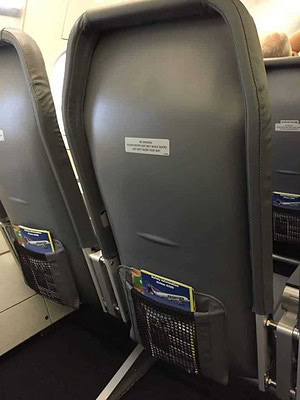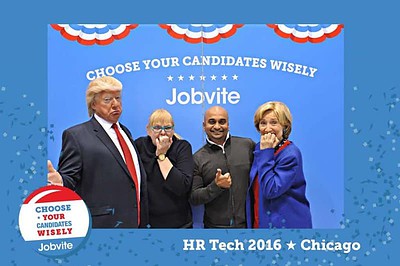Defining your brand and the business of photography. Or, Trump vs.Clinton.
I spent five days at the happiest place on earth.
 |
| Even the shower handle is branded at the Disneyland Resort Hotel. |
Disneyland and the hotel have learned from their rough launch in 1955. An opening where high heeled shoes sunk into soft virgin asphalt. Now, everything is totally brand — and I mean everything.
Southwest is my favorite airline, and they stick to their brand pretty well: fast, fun no-frills reliable service. Southwest launched by rethinking everything about an airline: they re-imagined the traditional spoke and hub system of air travel. They killed traditional meal service. (The first Southwest flights actually featured whisky as the primary refreshment.) At one time, they considered serving potato salad.
Over the years, they honed and sharpened their brand. No potato salad, they chose peanuts. And, for the past eight years I’ve flown Southwest relentlessly. Reliably. Until my Anaheim “Happiest Place on Earth” trip, I’d never had a flight cancelled, except for weather. And those were re-routed and re-booked so fast, in one case, I arrived earlier to my destination than my original itinerary.
Then came the great Southwest Computer Meltdown.
 |
| When I say I fly Southwest a lot, I’m not joking. |
“Mr. Gatty, I’m afraid I don’t have good news,” said the Southwest representative, who I called after my second flight was cancelled to get from LAX to home in Tampa. It was Tuesday, August 2, 2016. “I’m afraid we can’t get you home until Saturday, August 6 with a 1:40 am arrival.”
Um, no.
So I stomped over to United, and caught a red eye home. My out of pocket? More than $700.
A few years ago, there was an “engine malfunction” on an Orlando flight, and the plane turned around, and landed back at MCO — that’s Orlando in pilot speak. They switched out the aircraft (more pilot speak) and we re-launched. I was at BWI two hours past my original expected touch down.
In the morning, there was a survey in my email in box, apologizing for the bad flight. Attached was a $300 travel voucher.
The morning after I flew home on United because of the Southwest meltdown, there was no travel voucher. There was no email of any kind. THERE WAS DEATHLY SILENCE.
In fact, the only contact I had with Southwest over this incident was MY reaching out to THEM. In fairness, they did offer (if I jumped through specific hoops) to cover the $700 United ticket — but before I could get details about what to do? The call disconnected. Hmmmm. I never heard a peep, and did not collect $700 upon passing go. By the way — total time from walking out the door at the Happiest Place on Earth to grabbing my bag in Tampa upon finally arriving home? 26 hours. About 17 hours behind schedule.
What happened in the few short years between the MCO travel voucher (for a two hour irritation) and the LAX computer meltdown, that changed Southwest’s business culture? I think Southwest has growing pains. Further, they’ve drank from their own Kool Aid, and believe their own propaganda.
And…ticket prices have increased steadily, along with their profits. Meanwhile, their costs have actually dropped. Gasoline, for example, the single largest expense an airline faces, remains at rock bottom prices.
So if Southwest is (maybe?) giving up their edge, who is stepping in? In business, when an Alpha company starts to show weakness, a young startup (or reinvented older brand) is around the corner waiting to pounce.
Can you say Frontier?
 |
| Surfboard seats on Frontier. |
Now, I can hear those of you who have actually FLOWN Frontier revolting. They are HORRIBLE. The seats are AWFUL. They charge for EVERYTHING.
But….
Recently, I had a last minute booking for Matthew in Denver, so had to fly my partner from Tampa to Denver, round trip. Last minute on Southwest? Nearly $850, because the take off date was so close to the booking date. The first leg was almost $600. The home trip only $250. Last minute on Frontier? To get to Denver $75. To get home? $75.
True, I had to pay to ship equipment, cough up another fee for his checked bags and carry on camera bag — but the total expense still settled at about $300 to get to Denver. For the average person, it would have been less. So I did what any good shopper does: booked Matthew on Frontier to go to Denver, and Southwest to get home. While the Frontier “home” rate was still half, those luggage fees didn’t make the savings real.
True, he said he felt like he was riding a surf board to Denver. But the flight arrived on time, they handled his luggage properly, and basically it was painless — if awkward.
So, here is my point. When you run a business, in my case the business of photography, you need to spend all your time re-imagining your business to serve specific needs — needs your competitors aren’t serving. That passion drives business, and if you do things right — you might find yourself the alpha.
Part of that is relentlessly sticking to your core brand principals.
As soon as you stray, Goofy is there to pick up the slack. Before you know it, you’re competing against Goofy and wondering why you are losing.
Price (rate) is always a factor in marketing your business. It’s hard to justify being UNFAIRLY higher than a direct competitor. It’s easy to think, “we’re the best, no one else can do this, and we can CHARGE.”
Two things: first, that’s probably not true. There’s always someone else who can do it. And, second, if your rate is too high, the client just won’t buy the service. And, they’ll shop around, shaking their head.
But being too low isn’t the right answer. Businesses exist — even artistic business like photography — for a profit. If you don’t make money, you will not survive. You must make money. And, you need to find clients who will pay for and value what you offer.
Especially in the arts world, their seems to be an undercurrent — supported by popular web sites like Thumbtack and Groupon — that put the emphasis squarely on price. That’s bad for your business. It’s tough to compete on price alone. There’s always a Frontier Airlines who will do it cheaper, and there’s always a client who thinks the surf board seat is fine. I’ve had clients call and suggest I shoot their job for free because they are a non-profit (this despite holding the event at the Waldorf Astoria). They can afford a five star venue, but not pay a reasonable rate for photography? I’ve had clients suggest I shoot a job for a “photo credit”.
Um, no.
Or for my “portfolio”.
No.
I’ve seen Thumbtack requests for 8 hours of photography services on Christmas Day. Budgeted rate: $200.
Um, no.
I can’t imagine calling an accountant and asking them to prepare my taxes so they can say I’m on their client list. Or, using a site to get the cheapest accountant possible. I don’t want a cheap accountant. I want an accountant who knows their stuff. I want the alpha. I do not want an IRS audit.
Here’s what I suggest you do as an artistic business CEO:
1) Decide on your brand, and stick relentlessly to it. Do not waiver. Know what’s important. Follow that guide. It’s your Bible. Your Quran. Your Trump. (Shhhh! I did not vote for Trump.)
2) Do research and know what the average rate is for your service. Decide how you are different from your competition, and use those combined facts to establish your rate. Make a profit but…
3) Don’t get greedy. Don’t believe your own hype. Watch for Goofy lurking around the corner ready to pounce.
4) Once you find the winning formula, stick to it, emphasizing in your marketing how you’re different, rather than focusing on your rate. Understand: not every contact that is looking to hire will hire you. They may not value your brand differentiation. They may only value rate. They may just need three quotes to justify hiring their brother. They may hate your hair. Whatever. You don’t know. It’s just business. Suck it up, buttercup.
5) When you find the magic client — me with Southwest (if I do say so myself) — be relentlessly loyal. Do everything you can to make that client happy. EVERYTHING. The more magical they are, the more obsessive you need to be.
If a magic client suffers a crappy brand experience — and it happens — be proactive and fix it. Even sacrifice profit. It’s ok, that’s how you maintain future profit with that client. The key is to not screw up. Screwing up costs you money. Take the long view.
The business of photography is just a business. Knowing what to charge and how to market will drive you to success. Not knowing will force you to discount your rate, cost you profit, drive away potential clients, and keep you in the middle of the pack.
Think: Eastern Airlines. Pan American Airlines. Continental Airlines. Airtran Airlines. Howard Johnson Hotels.
Think: Kodak. Sony’s Walkman. My Space. Blockbuster Video.
All once at the top of the food chain. All once Alpha. Now: gone. Tah-tah! (Or nearly gone).
 |
| WTF happened? A meet and greet in Chicago. |
Think: Southwest. Netflix. Facebook. Apple. Target. Zara. Kipton Hotels.
All winners. We like winners.
And I hate to admit it. It pains my liberal, left wing fingers to even type this. But, last:
Think: Clinton.
Think: Trump.
Teeth. Gritting. But there it is.
Next up: Do I feel pretty?
